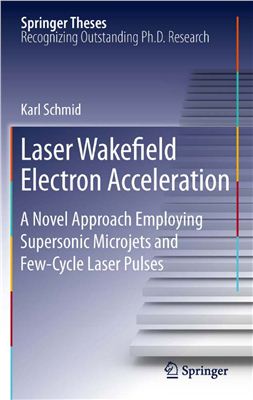Springer-Verlag, 2011. 177 p. ISBN:3642199496
This thesis covers the few-cycle laser-driven acceleration of electrons in a laser-generated plasma. This process, known as laser wakefield acceleration (LWFA), relies on strongly driven plasma waves for the generation of accelerating gradients in the vicinity of several 100 GV/m, a value four orders of magnitude larger than that attainable by conventional accelerators. This thesis demonstrates that laser pulses with an ultrashort duration of 8 fs and a peak power of 6 TW allow the production of electron energies up to 50 MeV via LWFA. The special properties of laser accelerated electron pulses, namely the ultrashort pulse duration, the high brilliance, and the high charge density, open up new possibilities in many applications of these electron beams.
This thesis covers the few-cycle laser-driven acceleration of electrons in a laser-generated plasma. This process, known as laser wakefield acceleration (LWFA), relies on strongly driven plasma waves for the generation of accelerating gradients in the vicinity of several 100 GV/m, a value four orders of magnitude larger than that attainable by conventional accelerators. This thesis demonstrates that laser pulses with an ultrashort duration of 8 fs and a peak power of 6 TW allow the production of electron energies up to 50 MeV via LWFA. The special properties of laser accelerated electron pulses, namely the ultrashort pulse duration, the high brilliance, and the high charge density, open up new possibilities in many applications of these electron beams.

